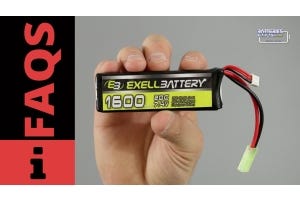Next-Gen Technology: The Flow Battery

While flow batteries aren't a new technology, they have been experiencing some innovations lately. These devices are seen as a way to make the supply of electricity more reliable and cheaper by evening-out fluctuations in its production. With a greater diversity of energy sources being employed by the power grid, there are difficulties in matching their supply with public demand. An affordable method of storing and releasing excess energy when it's needed can lower both costs and pollution. The flow battery shows promise at achieving this.
The Nuts And Bolts
The flow battery has the same basic components as other types of rechargeable chemical batteries. The most noticeable difference is that this type of battery has a liquid electrolyte that's kept separate from the electrode where the reaction takes place. They also differ in that the electrolytes store the energy rather than the electrode. Because relatively little electrolyte reacts with the electrode at a given time, it recharges more times at a faster rate than conventional batteries. Also, with a standard rechargeable battery, a slight increase in the amount of power needed means having to add a whole extra battery. With the flow battery, the exact amount of extra electrolyte solution is all that's required. Currently, though, these types of batteries, while they allow for a greater variety of cheaper chemicals to produce energy, supply less power by weight than lithium-ion and similar rechargeable batteries. Because they rely on the electrolyte flowing past the electrode, they also need pumps, sensors, and controls that other batteries don't require.
New Additions
Traditionally, the flow battery uses two separate electrolytes. These chemicals have to be kept apart by a membrane. One new type of battery uses electrolytes that rely primarily on vanadium. As a result, there's little problem if the chemicals accidentally mix. Another new approach uses laminar flow to keep the chemical agents, hydrobromic acid and bromine, from mixing prematurely. While bromine is fairly low-cost, organic chemicals like quinone are even cheaper. This method has the potential of greater energy density. Finally, the easiest way for the flow battery to become more cost-effective is if only one electrolyte in one tank is required. This has been accomplished using a zinc-based agent.
Best Uses
The main goal in developing these batteries is to provide an inexpensive way to store electricity from wind and solar generation. Since these power sources don't produce steadily, the flow battery can capture their excess energy for when they're output is low or non-existent. By the same token, this storage method can be applied to any power source. The flow battery would recharge overnight when rates are low, then release the power during peak demand. It can also hold additional power for emergency situations like a blackout or if demand surges. Many of these same uses can be carried out by smaller storage units in individual homes. Though it has lower energy density than lithium-ion batteries, this battery might find its way into future electric cars. Here, instead of recharging it in the vehicle, the spent electrolyte could simply be replaced by fresh chemicals and recharged at the fueling station.






